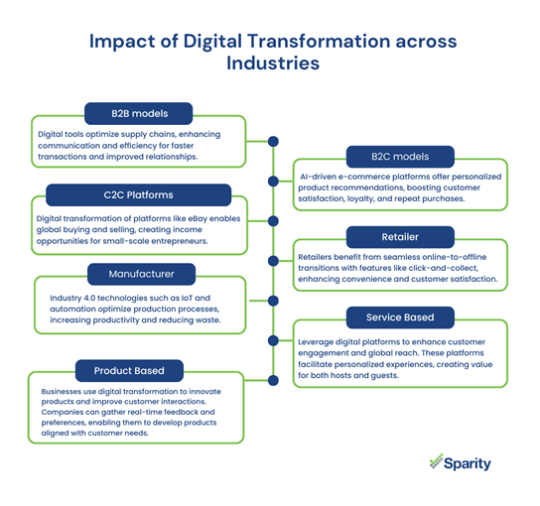Text
0 notes
Text
Magento 2.4.7 Version Upgrade Best Practices
Introduction
As Magento is stopping support for its 2.4.4 version and the new version with advanced security features, 2.4.7, has been released, it is crucial and imperative to proceed with the Magento version upgrade. It is also important to stay up to date. If you are planning to upgrade your Magento version, follow the below best practices.
Pre-Upgrade Preparation
Backup Your Project: Before upgrading, back up the database in all environments - Integration, Staging, and Production. This step ensures that if anything goes wrong during the upgrade, you have a reliable backup to restore your data and configurations.
Compatibility Check: Ensure that your custom themes align with the new Magento version. Custom themes can sometimes cause issues during upgrades, so verifying their compatibility is essential. Additionally, validate Composer dependencies using magento-cloud local:build for third-party extensions.
Review Release Notes: Thoroughly read Magento release notes and extension documentation. These notes often contain crucial information about new features, improvements, and potential issues with the upgrade.
Dependencies: When planning a Magento version upgrade, verify that installed versions of essential technologies align with the target version. Failing to update may cause compatibility issues, errors, and limit the new Magento version's capabilities.
Use Pre-Release Versions: Testing new releases for compatibility can save you headaches later on. Before upgrading your live environment, test the new Magento version in a development or staging environment. This allows you to identify and resolve any issues before impacting your production site.
Review Upgrade Plan Checklist: Refer to Magento's Upgrade Plan Checklist when planning your upgrade. This checklist covers essential steps, considerations for a successful Magento version upgrade.
Budget and Resource Allocation: Magento version upgrade may require time, effort, and potentially additional tools or services. Ensure you have the budget and resources allocated to complete the upgrade successfully.
Database and Environment Checks
Database Testing: Perform tests on your database to address any issues that may arise post-upgrade. This includes checking for data integrity, schema changes, and performance optimizations. Running test scripts can help identify and fix potential problems before the upgrade.
Environment Settings: Update environment-specific settings to align with the new Magento version. This includes configurations such as cache settings, file permissions, and server requirements.
Search Service Compatibility: Ensure that your search service version is compatible with the PHP client version. Magento relies on search services like Elasticsearch for efficient search functionality.
Disk Space Check: Verify your MySQL database connection and available disk space via SSH. Make sure to allocate adequate disk space in the services.yaml file. Additionally, clearing cache and cleaning /log and /tmp directories can optimize space usage.
Upgrade Execution
Local and Integration Testing: Test the upgrade locally and on integration environments to catch any issues early on. Running tests on a local development environment allows you to identify and fix issues before they affect your live site. Integration testing ensures that all components of your Magento project work together seamlessly after the upgrade.
Staging and Production Deployment: Merge your code to the staging environment and resolve any issues that arise. Thoroughly test in staging before pushing changes to the production environment. Staging environments mimic the production environment closely, providing a safe space to validate the upgrade before making it live. Make sure you follow all the coding guidelines and standards that were prescribed by Magento / Adobe commerce.
Post-Upgrade Tasks
After completing the upgrade, there are several post-upgrade tasks to ensure everything is running smoothly:
Indexer Status: Check and reindex as necessary using Magento's indexer management tools. Indexing is crucial for efficient search and performance in Magento. Reindexing ensures that your product data, prices, and catalog information are up to date.
Cron Job Verification: Verify the status of your cron jobs and rerun them if needed. Cron jobs are essential for Magento's scheduled tasks, such as updating product prices and sending transactional emails. Checking cron logs and the cron_schedule table helps ensure that these tasks are running as expected.
Testing: Conduct post-upgrade User Acceptance Testing (UAT) on both staging and production environments. UAT involves real users interacting with your site to ensure functionality aligns with expectations. Address any issues with third-party and custom extension upgrades during this phase. Automated testing minimizes human error and accelerates the testing process.
What else to check?
For successful Magento version upgrades, implement these best practices: view upgrades as chances to refine code quality and boost performance by refactoring and optimizing; keep a base instance for testing new features and configurations before deploying them live; conduct routine audits, including code reviews, performance assessments, security scans, and accessibility checks, to enhance overall project quality; and utilize Magento's Extensibility platform for customization through well-built extensions, ensuring enhanced functionality without compromising the upgrade path.
Conclusion
By following these detailed steps and best practices, you can ensure a smooth and successful Magento version upgrade, minimizing disruptions and maximizing the benefits of the new features and improvements. Taking the time to prepare, test thoroughly, and address post-upgrade tasks will result in a more stable and efficient Magento project.
Why Sparity?
Sparity offers end-to-end Magento expertise, ensuring seamless project execution from conception to launch. With a deep understanding of Magento's capabilities, Sparity delivers tailored solutions for optimal performance. Trust Sparity for comprehensive Magento services, from customization, migration and magento version upgrade to maintenance, to elevate your online store.
0 notes
Text
Top 10 Impact of Digital Transformation on Business Models and Industries in 2024
Sparity Soft Technologies
www. Sparity.com
Top 10 Impact of Digital Transformation on Business Models and Industries in 2024
Introduction
Impact of Digital transformation is driving significant changes in business models, propelled by technologies such as AI and cloud computing. This shift, exemplified by online giants like Amazon and Airbnb, fosters innovation for efficiency and customer satisfaction. Traditional models are adapting with the rise of freemium and SaaS, yet new challenges surface. This transformation affects industries across the board, urging companies to integrate tools for value delivery while encountering both opportunities and obstacles. This blog delves into how digital transformation is reshaping business models, highlighting the need for process adjustments and technology adoption like AI and data analytics to thrive
Digital Transformation and Business Models

Impact of Digital Transformation across Industries

Impacts of Digital Transformation on Business Models
Enhanced Customer Experiences: Digital transformation allows companies to understand their customers better than ever. Through AI algorithms analyzing vast amounts of data, businesses can offer personalized product recommendations and tailored experiences. For instance, Amazon's recommendation engine suggests products based on a customer's browsing history and purchase behavior, enhancing customer satisfaction and loyalty
Operational Efficiency Boost: Digital tools such as robotic process automation (RPA) and cloud computing streamline operations, reducing costs and improving efficiency. UPS, for example, utilizes RPA to automate package sorting in warehouses, increasing throughput and accuracy. This efficiency gain from digital transformation enables companies to reallocate resources effectively and respond promptly to market demands.
Diversification of Revenue Streams: Digital transformation opens new avenues for revenue generation. Media companies like The New York Times have diversified by offering digital subscriptions alongside traditional print. This shift in revenue model reduces dependence on declining print sales, ensuring a steady income stream. The impact of digital transformation is clear in how companies adapt to changing consumer preferences and technological trends.
Data-Driven Decision Making: Digital transformation provides businesses with valuable insights from data analytics. Netflix, for instance, uses viewer data to recommend personalized content, increasing user engagement. This data-driven approach guides strategic decisions, such as which shows to produce or acquire, improving the overall user experience and retention rates.
Global Market Expansion: Digital platforms like Alibaba facilitate global market access for businesses of all sizes. Alibaba connects buyers and sellers worldwide, enabling small businesses to reach international markets. This global expansion, driven by digital transformation, opens doors to new customer segments and revenue opportunities, illustrating the transformative impact of digital platforms on global commerce.
Subscription-Based Models Thrive: The shift to subscription-based models is a significant impact of digital transformation. Adobe's transition to a subscription model with Creative Cloud ensures a steady revenue stream while providing customers with continuous updates and services. This model, popularized by digital transformation, offers customers convenience and flexibility while offering companies predictable revenue and improved customer relationships.
Innovation and Market Differentiation: Digital transformation fosters innovation allowing companies to differentiate themselves in the market. Tesla's electric vehicles, with their advanced technology like self-driving capabilities, set a new standard in the automotive industry. This innovation, a direct outcome of digital transformation efforts, positions Tesla as a leader in electric vehicle technology, showcasing the impact of innovation driven by digital transformation.
Personalized Customer Experiences: Digital transformation enables personalized experiences tailored to individual preferences. Starbucks' mobile app, for example, suggests personalized drink options based on customer behavior and preferences. This level of personalization enhances the overall coffee shop experience, driving customer loyalty and engagement through a seamless and convenient digital platform.
Organizational Agility: Digital transformation allows companies to adapt quickly to market changes and customer needs. Airbnb's business model, for instance, rapidly responds to changing travel trends by offering unique accommodations and experiences. This agility, stemming from digital transformation initiatives, keeps companies competitive and responsive in dynamic markets, showcasing the importance of adaptability in the digital age.
Value Addition Through Digital Transformation: Across industries, digital transformation adds significant value to businesses. GE's Predix platform for industrial IoT, for example, helps companies monitor and optimize equipment performance. This results in reduced downtime, improved operational efficiency, and cost savings. The value addition from digital transformation is evident in how companies leverage technology to drive innovation, efficiency, and competitiveness in their respective industries.
Here is a Video by Gerd Leonhard explaining the importance of Digital Transformation. Why to wait ? Embrace the change now with Sparity.
Conclusion:
In every sector, the impact of digital transformation reshapes business paradigms, amplifying efficiency and customer engagement. It optimizes operations, drives innovation, and fosters adaptability. From manufacturing to retail, healthcare to finance, this evolution is essential for staying competitive and relevant in the modern landscape.
Why Sparity:
Sparity offers cutting-edge digital transformation solutions tailored to your business's needs. With more than a decade of experience, our expertise ensures innovation, efficiency, and competitiveness, empowering your organization for success. Choose Sparity for personalized experiences, operational agility, and enhanced value creation in the digital era to experience the impact of digital transformation.
0 notes




